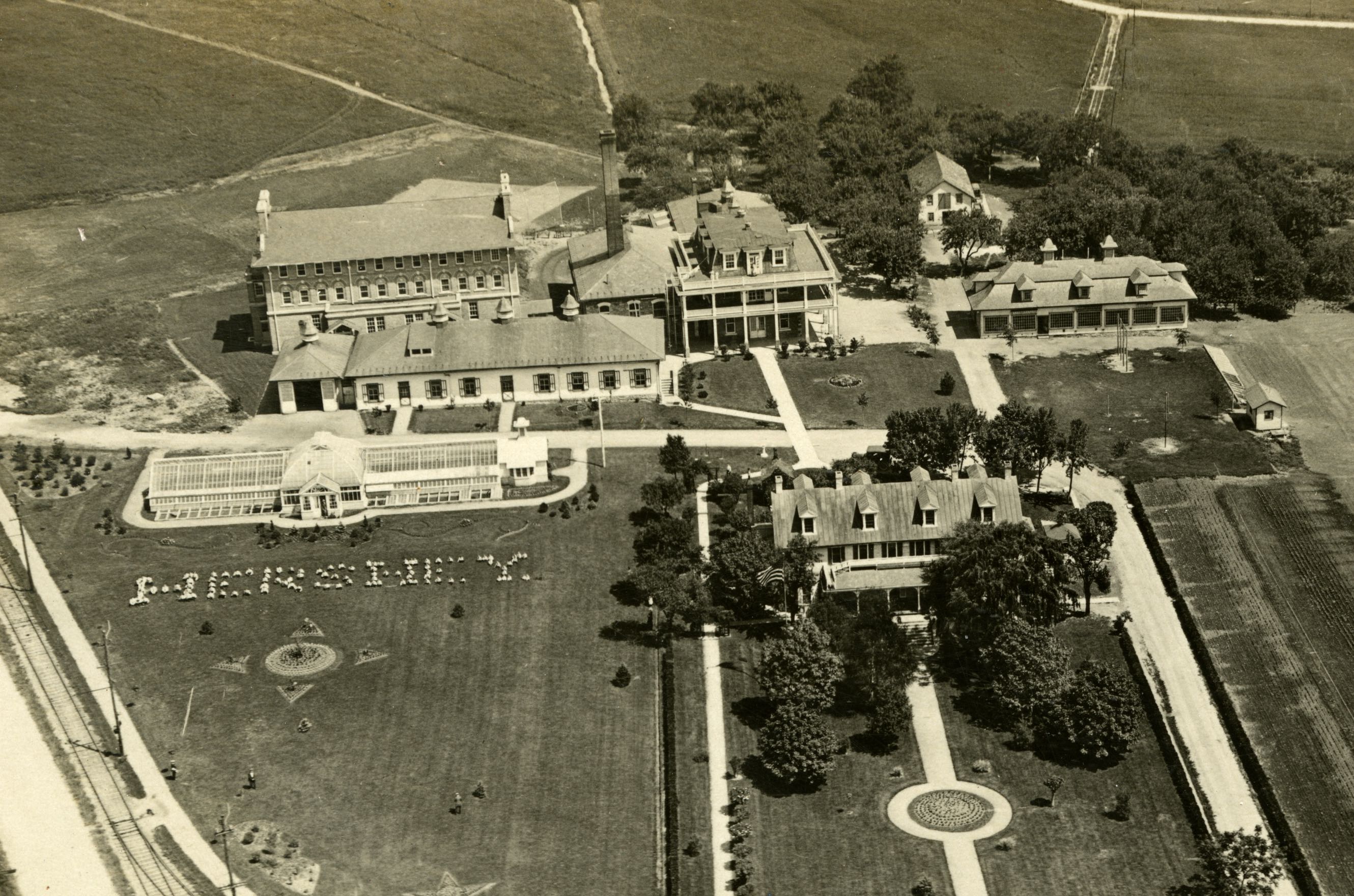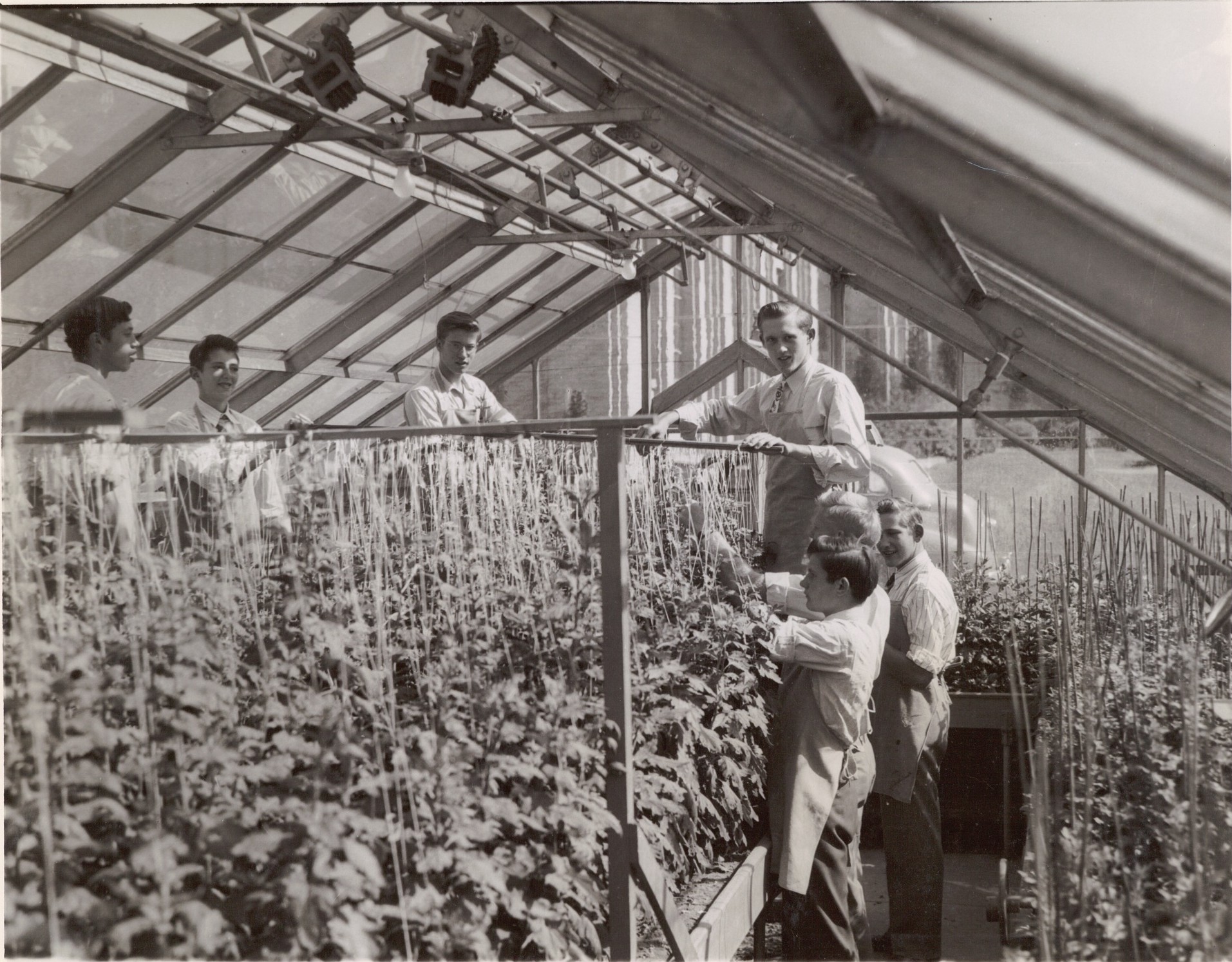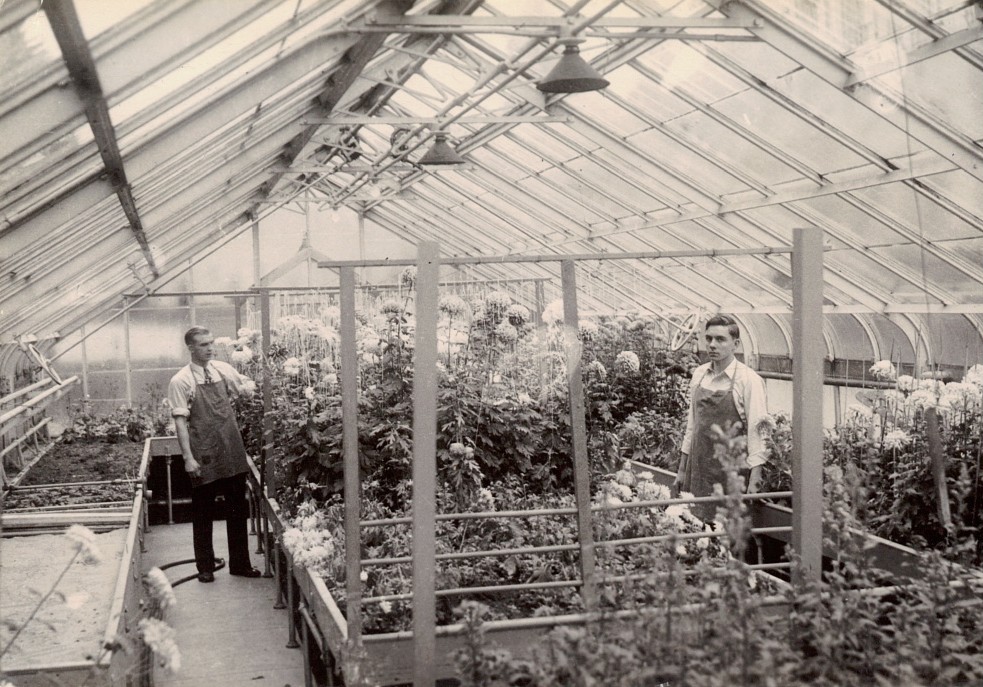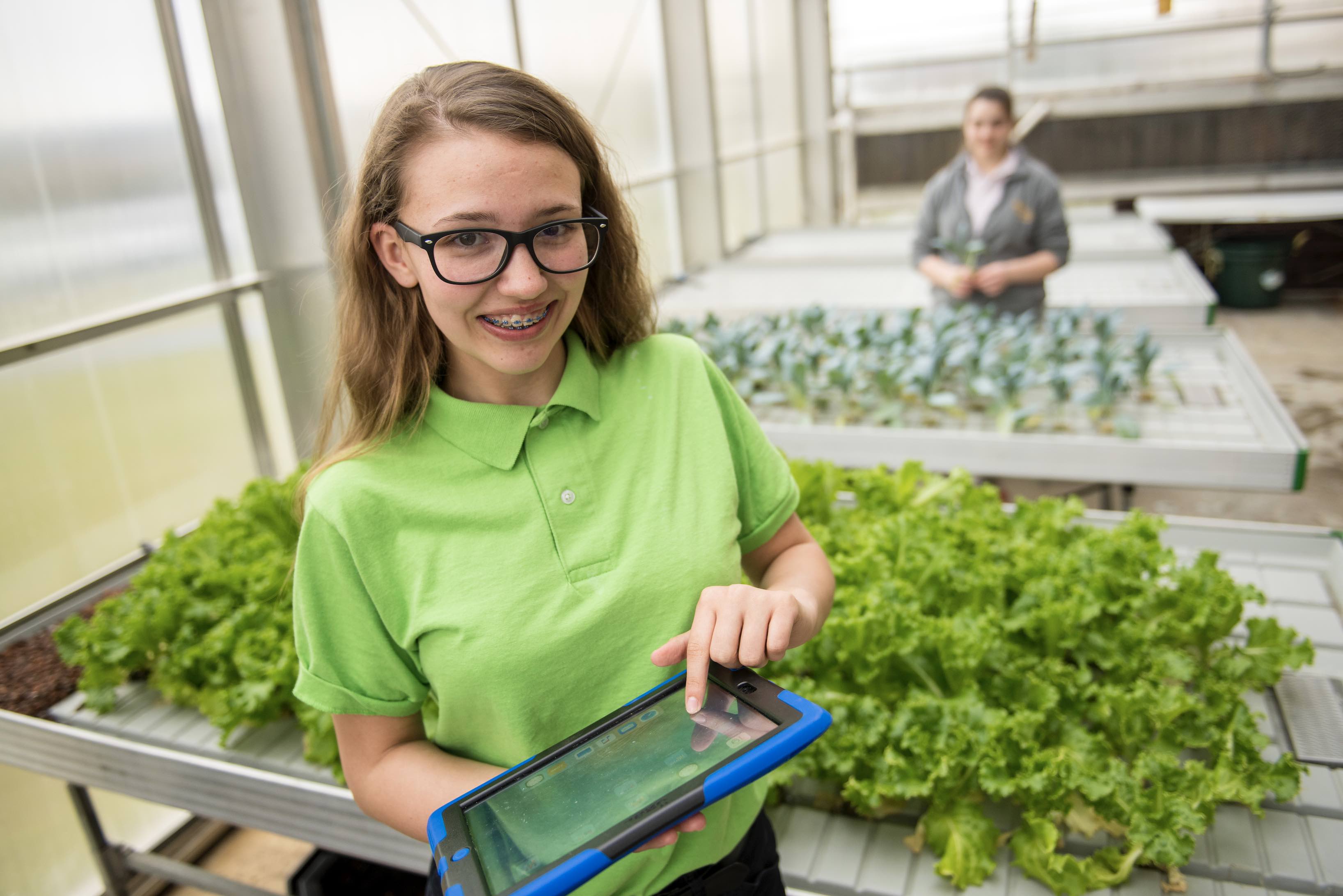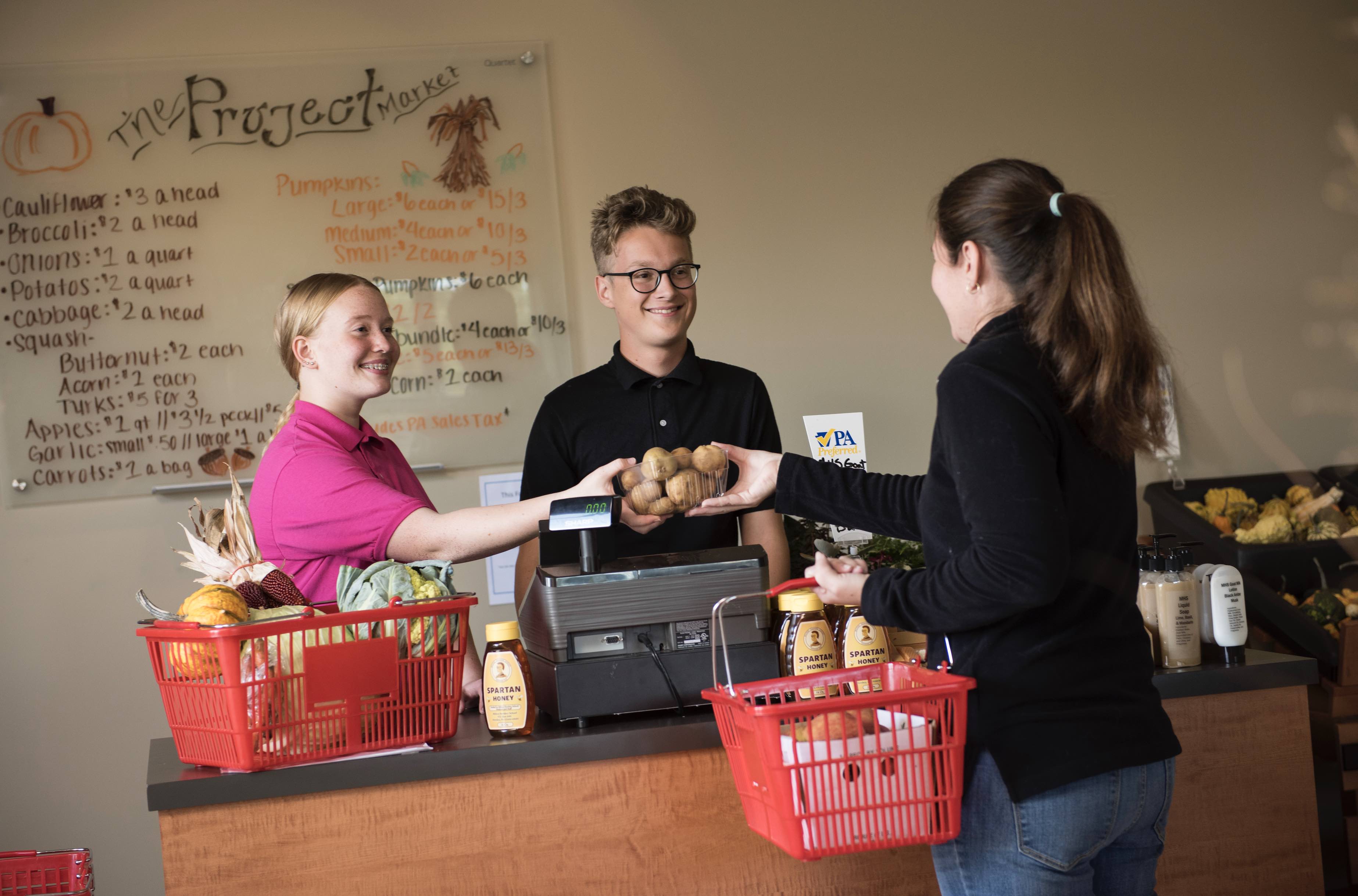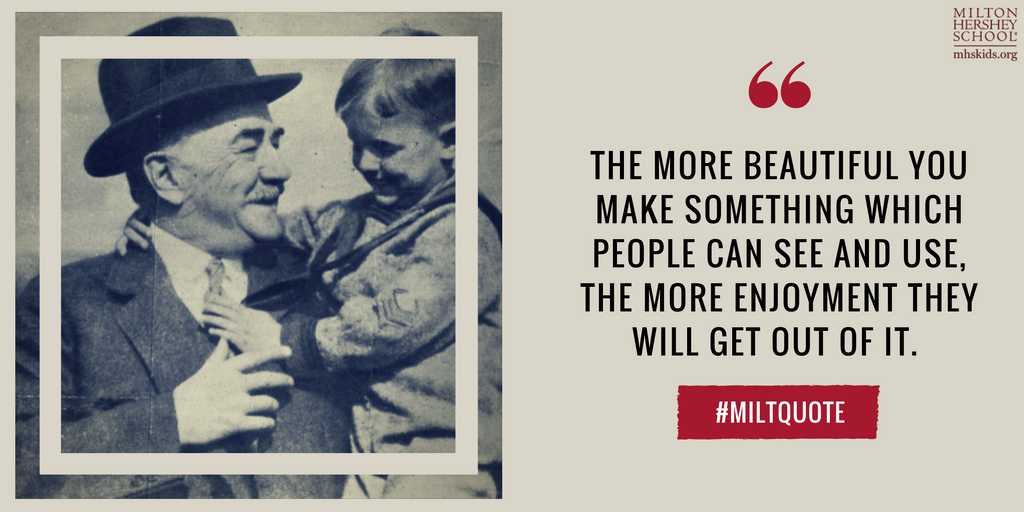Combining Science and Art: The History of Horticulture at MHS
Horticulture is defined as the science and art of growing fruits, vegetables, flowers, or ornamental plants. At Milton Hershey School, students have been embracing this combination of art and science for 110 years and counting.
The Hersheys’ Appreciation for Nature
The Deed of Trust, which created the school in 1909, states that students “shall be instructed in the several branches of a sound education, agriculture, horticulture, gardening, such mechanical trades and handicrafts…it may be important for them to acquire.”
Milton Hershey’s wife Catherine loved flowers, especially roses, and Mr. Hershey shared a similar appreciation for nature. He created the Hershey Rose Garden (now called Hershey Gardens) as a tribute to her.
Learning by Doing
The first article published in the Hershey Press on Sept. 16, 1910 shared that Milton Hershey School students were given a plot of ground to “raise cereals, vegetables, plants, and flowers.” In 1912, a publication about the school’s program shared that students learned by doing with a comprehensive, well-balanced curriculum—including modern methods of agriculture, horticulture, and various branches of animal husbandry, dairying, and creamery work.
In the Horticultural Department the boys will be taught the planting, budding, grafting, pruning and care of trees and vines; the right kind of soil, and the location and exposure for the different kinds of fruit trees, vines and shrubs; the study of injurious insects and the making and application of insecticides, scalecides and fungicides; something of landscaping and vegetable gardening, together with the propagation of plants and flowers and the practical features of greenhouse work.
In the early 1920s, a greenhouse was added to the school, expanding on the Horticultural Department and the amount of hands-on learning experiences students would receive. Many people from the town of Hershey started their gardens with plants from the school’s greenhouse.
When the Junior-Senior High School (now Catherine Hall) opened in 1934, it also featured a greenhouse where students received hands-on instruction and learned about plants and flowers.
Horticulture Staff and Leaders
Henry Nixon, the school’s first vocational agriculture and horticulture teacher, recalled being in a meeting where Milton Hershey asked who he was and what he did. When Mr. Hershey heard that Nixon was the new agriculture teacher, Milton Hershey replied, “I’ve been telling [Superintendent George] Copenhaver all along we needed a full-time agriculture teacher up here. I finally got it done. Good.”
As a student, Harold Karl ‘44 was in the horticulture program. He worked at the Hershey Rose Garden and in the greenhouse near High Point Mansion, Milton Hershey’s home. He had important responsibilities, including watering plants at High Point Mansion. Mr. Hershey was known to spend time talking with Karl and frequently asked how he was doing. Karl remembers Milton Hershey as a very kind and gentle man.
Horticulture Today
Staying true to our founders’ roots, a modern Horticultural Center opened in 1998 on the MHS campus. It contains the following amenities for students:
- A kindergarten through 12th-grade laboratory and classroom
- A large conference room for activities
- A house for plant potting and storage
- Three climate-controlled greenhouses that are divided into areas for age-appropriate activities and learning. They are dedicated to modern agricultural technologies, including hydroponics.
In 2017, Milton Hershey School added its STEAM Project Market to the Agricultural and Environmental Education (AEE) program’s Horticultural Center. Project Market is a year-round market open to the campus community and the public. It operates through an authentic, student-run business model, providing a pipeline for students to develop student-produced products for sale. They are involved in all facets of Project Market including marketing, advertising, logo and branding development, customer service, inventory control and management, research and design in product development, and entrepreneurial skills.
Through hands-on learning opportunities provided by AEE at the Horticultural Center and specialized Agriculture and Natural Resources classes through the school’s award-winning Career and Technical Education (CTE) program, MHS students are continuing the school’s tradition of learning by doing.
Combining science and art, agricultural and environmental education helps fulfill Milton Hershey’s vision for the school and town he created.
As he shared with a local paper in 1938, “The more beautiful you make something which people can see and use, the more enjoyment they will get out of it. At least that is the way it looks to me.”


